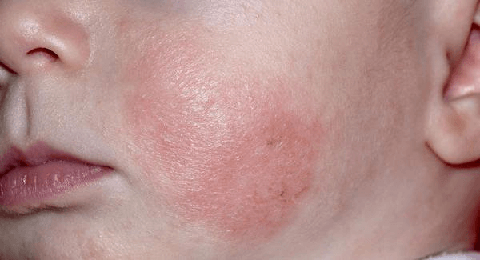La peau constitue la frontière entre nous et le monde extérieur. La peau est l’organe des sens le plus étendu puisqu’elle recouvre la totalité du corps et possède une superficie d’environ 1,8 m2. La peau nous fournit également un système de défense vis-à-vis de l’extérieur. Il s’agit d’une protection du point de vue mécanique et physique, mais également d’une protection grâce à une barrière chimique (pH, équilibre ionique et flore de la peau) qui empêche le développement ou les nuisances d’agents agresseurs tels que bactéries, champignons et parasites.
La peau est un organe multifonctionnel qui contient notamment les glandes sébacées et sudoripares. Elle est dotée d’une extrême sensibilité grâce à ses nombreux récepteurs spécialisés (tactile, thermiques, algiques). Elle est donc sensible à la pression, à la température et à la douleur.
À la naissance, le premier contact du bébé avec la mère se fait grâce au toucher et à l’olfaction. C’est ainsi que toute la vie, la peau demeure « l’organe » du contact et de son pendant la séparation.
De nombreuses expressions populaires traduisent d’ailleurs son importance dans les contacts humains. Ne dit-on pas « avoir quelqu’un dans la peau » ou au contraire « celui-là je ne sais pas le sentir (olfaction), c’est épidermique (toucher) ! » ? « Être mal dans sa peau » est une autre expression très connue qui traduit bien souvent une communication et un contact difficile avec autrui.
Des problèmes de peau manifestent souvent un problème de perte de contact et donc de séparation. C’est ainsi que l’eczéma ou dermatite de type atopique (dont on ignore l’origine) affecte plutôt les enfants, alors que l’eczéma de contact touchera plus particulièrement les adultes. Les éruptions cutanées qui apparaissent avec ou sans prurit peuvent être sèches ou suintantes, permanentes ou épisodiques.
Comme pour toutes les maladies, l’apparition du symptôme constitue la phase de réparation, c’est-à-dire que le problème se manifeste lorsque le « deuil » de cette séparation s’effectue. Dans quelques cas, la réaction cutanée apparaît directement au moment du traumatisme émotionnel, mais la plupart du temps les problèmes surviennent de manière différée et parfois des années plus tard lorsqu’une situation rappelle l’événement déclencheur.
Afin de résoudre le côté émotionnel indispensable à la disparition du problème cutané, il faut mettre en lumière le premier événement déclencheur. Ce qui est difficile puisque le problème traumatisant reste souvent silencieux. Profondément occulté, il est enfoui dans l’inconscient. Toute la difficulté réside dans le fait de devoir fouiller l’inconscient pour « mettre le doigt » sur ce conflit primal. Par exemple, une petite fille conçue juste avant une séparation de couple (maman–papa) durant la grossesse a ressenti durant toute cette période de séparation l’anxiété et la tristesse de la maman. Elle déclenchera un eczéma lors de son entrée à l’école à l’âge de trois ans, événements qui constituent la première séparation d’avec sa maman. L’eczéma se manifeste dans les plis des coudes et des genoux c’est-à-dire juste aux endroits où les contacts se font avec la maman lorsqu’elle la prend dans ses bras. La peau reste fragile même en dehors des poussées eczémateuses. À ces endroits les lésions sont invisibles, mais semble-t-il bel et bien présentes. Lors des poussées (guérison même momentanée), il faut éviter d’appliquer des crèmes à la cortisone qui vont empêcher le corps de procéder au processus de réparation.
Retrouver l’élément déclencheur d’un psoriasis est encore plus compliqué, car cette pathologie résulte la plupart du temps d’un conflit de double séparation, c’est-à-dire la séparation d’avec au moins deux personnes, ce qui en fait la plupart du temps un véritable cercle vicieux. Ton l’exemple d’un homme qui adore sa fille issue d’un premier mariage, mais celle-ci ne s’entend pas avec la seconde épouse de son père. Le père est donc contraint soit de passer du temps avec son épouse, mais sans sa fille, soit avec sa fille, mais séparé de sa femme. Il vit donc simultanément une situation de réparation et de conflit permanents. Tant que cette situation perdure, il n’y aura donc pas de « guérison » totale.
On constate que tout cela est bien complexe, mais rappelez-vous que l’on peut éviter de nombreux problème de santé en formulant oralement (même seul pour soi-même) les frustrations, les colères… dans les heures ou les jours qui suivent leur ressenti.




